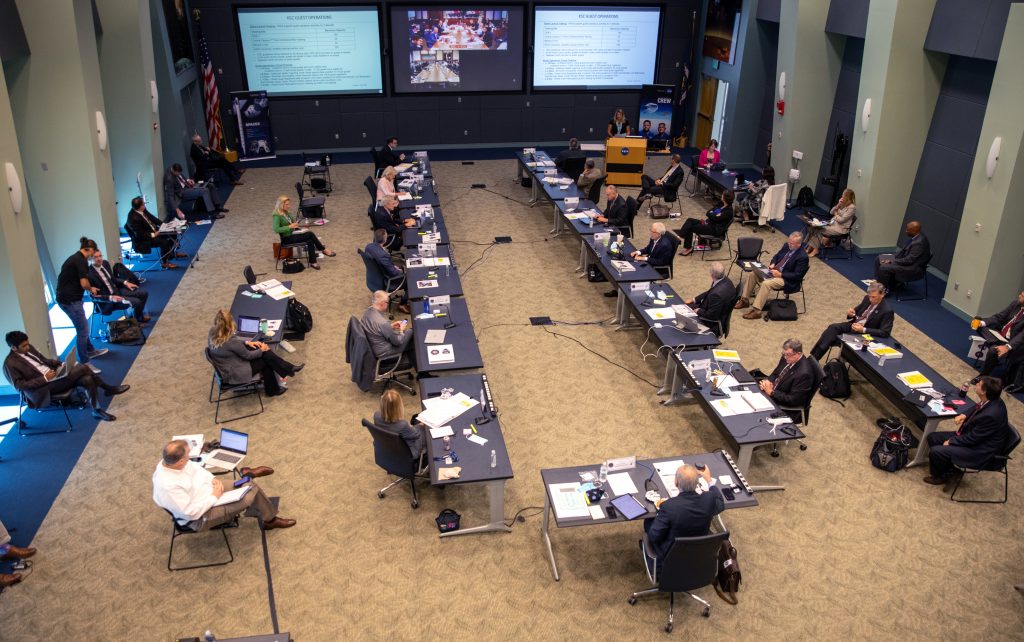
NASA and SpaceX managers are gathered at the agency’s Kennedy Space Center in Florida today, with some participating remotely to maintain physical distance, for the Demo-2 Flight Readiness Review (FRR). SpaceX will launch a Falcon 9 rocket carrying NASA astronauts Robert Behnken and Douglas Hurley aboard the company’s Crew Dragon spacecraft to the International Space Station. Liftoff is planned for 4:33 p.m. EDT on Wednesday, May 27, from Launch Complex 39A at Kennedy. Part of NASA’s Commercial Crew Program, the flight will return human spaceflight to the International Space Station from America for the first time since the retirement of the Space Shuttle Program in 2011.
Steve Jurczyk, NASA Associate Administrator, is leading the review. The senior SpaceX official in person at the review is Hans Koenigsmann, vice president for Build and Flight Reliability.
During the review, NASA and SpaceX personnel will hear presentations from key leaders such as Kathy Lueders, manager for the Commercial Crew Program at NASA, Kirk Shireman, manager for the International Space Station Program at NASA, Joe Petrzelka, the Senior Director of Dragon Engineering at SpaceX, Bala Ramamurthy, the Demo-2 Launch Chief Engineer at SpaceX, and Benji Reed, Director of Crew Mission Management at SpaceX, among others. The review will focus on the readiness of SpaceX’s crew transportation system; the readiness of the station program and its international partners to support the flight; and the certification of flight readiness.
Demo-2 will be SpaceX’s final test flight to validate its crew transportation system, including the Crew Dragon, Falcon 9, launch pad and operations capabilities. During the mission, the crew and SpaceX mission controllers will verify the performance of the spacecraft’s environmental control system, displays and control system, maneuvering thrusters, autonomous docking capability, and more. Behnken and Hurley will join the Expedition 63 crew on the station to conduct important research as well as support station operations and maintenance. While docked to the station, the crew will run tests to ensure the Crew Dragon spacecraft is capable on future missions of remaining connected to the station for up to 210 days. The specific duration for this mission will be determined after arrival based on the readiness of the next commercial crew launch. Finally, the mission will conclude with the Crew Dragon undocking from the station, deorbiting and returning Behnken and Hurley to Earth with a safe splashdown in the Atlantic Ocean.
The FRR is targeted to be completed today, but officials have set aside additional time tomorrow, if needed. Approximately one hour after the review ends, the agency will hold a news conference on NASA Television and online at http://www.nasa.gov/live.
